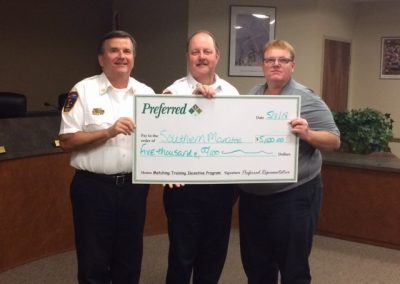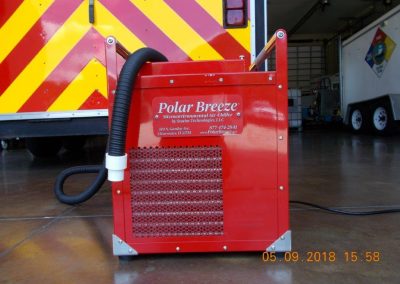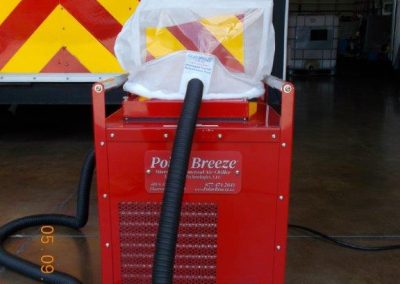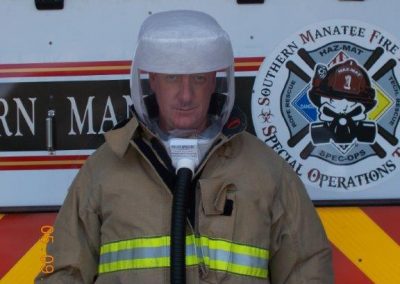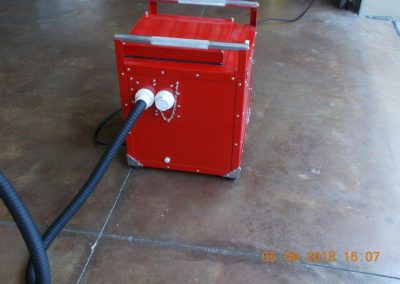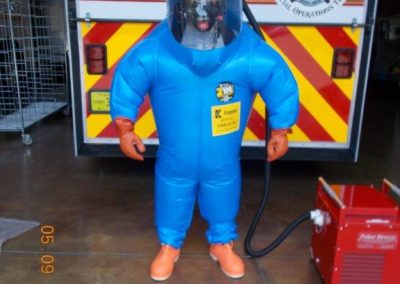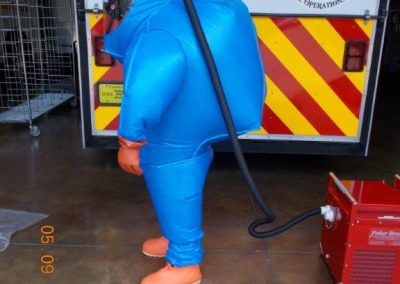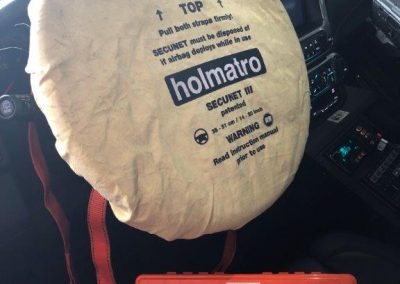The Southern Manatee Fire Rescue District receives a check for $5000.00 for two (2) Safety grants that were submitted to the TIPS program. Captain Robert Thayer submitted two (2) grant applications for two (2) Safety equipment enhancements that the District implemented back in October 2017 for the purpose of reducing injures that could occur at the scene of a motor vehicle accident and structure fire. The first grant application was for the Secunet III Airbag Protection Covers that allows our personnel to work inside a vehicle on a patient without risk of injury from airbag activation. The Secunet III device is placed over the steering wheel of any passenger or commercial vehicle. There are times that air bags did not inflate and in these cases, could cause serious injury to the patient and to the firefighters. Even though the battery will be immediately disconnected by emergency personnel, an airbag can still get deployed. As soon as the Secunet III device is secured to the steering wheel, if the airbag was to deploy, the Secunet III captures and holds this explosive force within it and then slowly deflates as the airbag slowly deflates. When airbags first came out on vehicles, injures including serious injures did occur to emergency personnel that were not familiar with airbag systems. To prevent injures to our personnel, the Secunet III device is carried on all of our fire apparatus and our personnel are trained over its use. Captain Thayer submitted this Safety Enhancement to the Preferred Training/Safety Incentive Grant Program and was approved for reimbursement of $2025.00.
In addition to the Secunet III device, Captain Thayer also submitted a grant application for the “Polar Breeze” portable air conditioner for use at Rehab during a large fire incident or hazardous materials incident. Regardless of the time of year here in Florida, any fire can immediately effect the health and well being of a firefighter due to extreme heat and fluid loss. To prevent illness at the fire ground, Rehab is immediately established and personnel are frequently rotated into rehab for cooling, fluid replacement and vital sign monitoring. However to lower core temperature, even if rehab is set up under a tent in the shade, the firefighter in rehab will be breathing air that is probably around 80 degrees or warmer and this will actually effect the time element on how long a firefighter will need to stay in Rehab., the higher the outside temperatures the longer in rehab. With a hazardous materials incident in which a level A suit is deployed, besides heat being generated from the firefighter that is slowly building in this suit, external heat from the sun rapidly builds up in the suit and this heat build-up shortens the actual work time that a firefighter can do and causes them to rapidly build up core body temperature and fluid loss and easily leads to a heat related illness. The District conduct research over an air conditioning system that astronauts use when in space to maintain their core body temperature at 98.6 and found a device that can be utilized when Rehab is established to cool the air within a tent or the trailer as well as actual hook up tubing (like the astronauts do) that blows cold air into fire gear or level A suit. Personnel working in a Level A suit can be hooked up to this portable air conditioner and work in comfort and to prevent a heat related illness. This device is called the “Polar Breeze”. The District purchased this device and it is kept on our Haz-mat Tech. Trailer. Captain Thayer submitted this Safety Enhancement to the Preferred Training/Safety Incentive Grant Program and it was approved for reimbursement of $2975.00. Both projects that were implemented are too aimed at reducing firefighter injury/illness in carrying out their duties and responsibilities in savings lives and protecting property.

